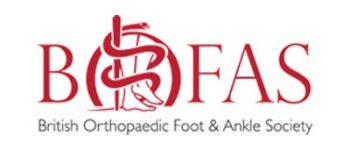About Tarsal Coalition
Tarsal coalition refers to the abnormal connection between the tarsal bones, which are situated at the back of the foot. As the condition develops it can lead to pain and a restricted range of motion in one or both feet. The abnormal connection can involve cartilage and bone, as well as fibrous tissue.
The tarsal bones are comprised of the talus, the navicular, heel bone (calcaneus) cuneiform and cuboid bones. This group of bones combines to facilitate foot motion.
Causes
Tarsal coalition is understood to occur the most during fetal development. This results in bones which are not formed properly from birth. Other causes include an injury to this area of the foot, arthritis which affects this area of the foot, and infection.
Symptoms
Even though the majority of people with the tarsal coalition condition are born with it, symptoms don’t usually present themselves until later in life. This is typically between the ages of 10 to 16, when the bones begin to mature at a rapid rate. In other cases, no symptoms will occur at any stage during childhood, and will instead arise at an older age.
Typical symptoms of tarsal coalition include; tired legs, pain when standing or walking, flatfoot or flat feet, muscle spasms which lead to the foot turning outward when you are walking, ankle stiffness, foot stiffness and a limp.
Treatment
Tarsal coalition is usually diagnosed after gathering information related to the nature of the condition in an individual, including its duration and the type of symptoms being experienced. A comprehensive physical examination of the ankle and foot will be undergone. Imaging tests and studies involving methods such as x-ray, MRI or CT can also be used to assess the condition.
Non-surgical treatments for tarsal coalition include; physiotherapy, such as exercise programmes, massage and ultrasound therapy. Orthotics, such as custom shoe insoles which can redistribute weight, limit motion and reduce discomfort; immobilisation of the foot in order to allow the affected area to rest and recover. Sometimes the wearing of a boot or using crutches to prevent putting weight on the foot can be helpful. Nonsteroidal anti-inflammatory drugs like diclofenac and ibuprofen can make the pain more bearable. Steroid injections can be used to help diagnose and temporarily treat the condition. They are often done under x-ray or ultrasound guidance.
Potential procedures include; resection, which removes the coalition itself and replaces it with fatty tissue or muscle from other areas; and fusion, which can realign the bones and limit movement of certain joints to reduce pain. Factors such as the nature of an individual’s condition and their age will play a part in the type of surgical procedure which is advised on. If a fusion is required then 6 weeks of non weight-bearing in a plaster cast will be necessary. If resection is performed then immediate weight-bearing is permitted with 6 weeks of taking it easy resting and elevating.
As with all foot surgery, it is common for swelling to persist for some months after surgery and is completely normal. This swelling will eventually completely subside with time and can take up to 12 months but often goes well before this.










